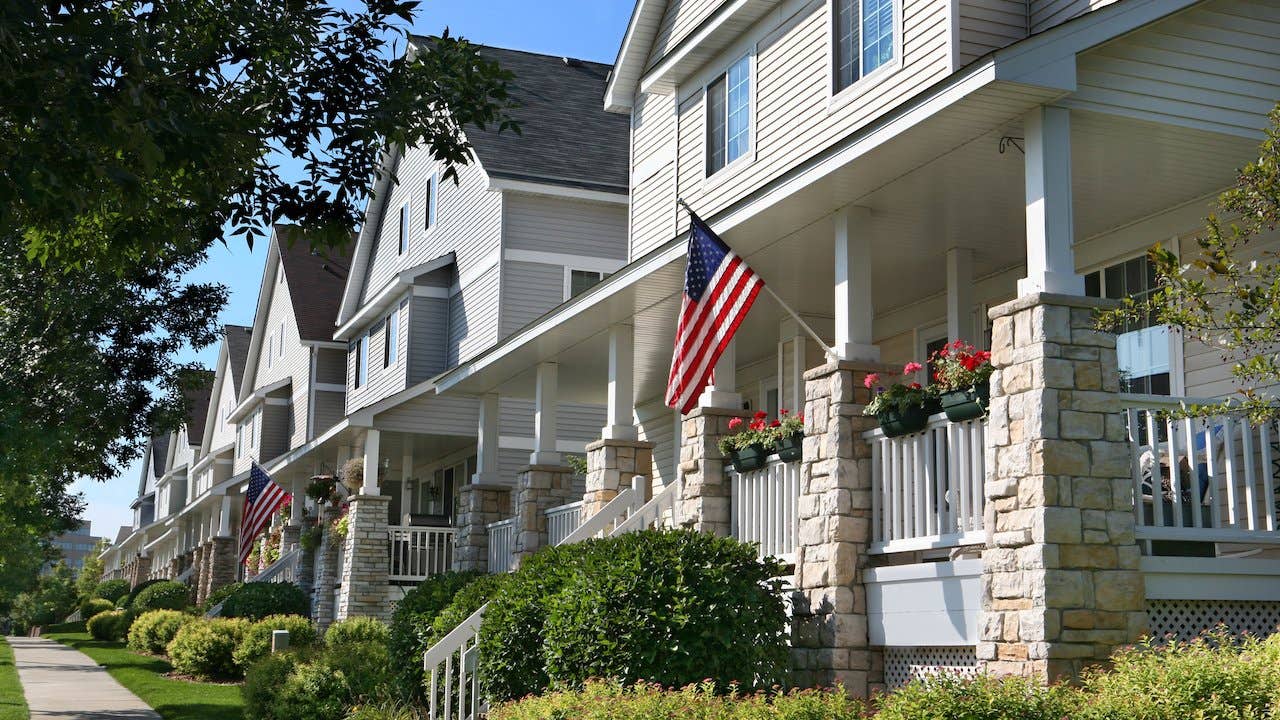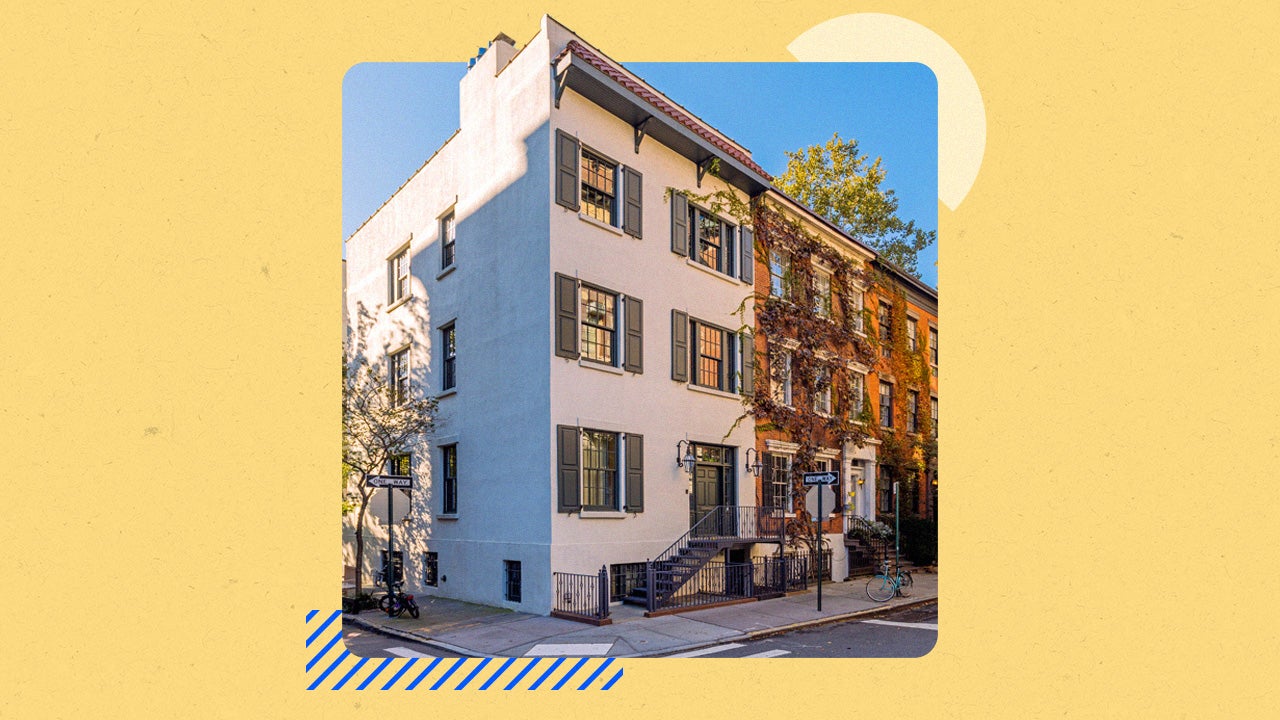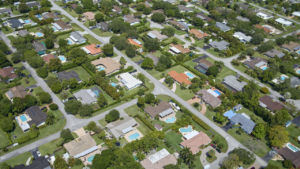After a record run, the housing market finally shows signs of cooling

For two years, the number of homebuyers has far outstripped the number of sellers. As a result of that mismatch between supply and demand, bidding wars erupted, home prices soared to record levels and affordability got squeezed. Now, though, the housing market is finally showing signs of slowing. Home price appreciation, while still in double digits, is cooling. And the supply of homes for sale is rising as a spike in mortgage rates creates a drag on sales activity.
“Consumer concerns about rising rates, inflation and a potential recession are manifesting in softening demand.
— Sam Khater Chief Economist at Freddie Mac
Todd Sachs, a broker at Sachs Realty in Cockeysville, Maryland, sees the hallmarks of a slowdown in his market north of Baltimore. Buyers are no longer waiving inspections, and sellers can no longer expect their properties to fetch thousands more than the asking price.
“Things are still selling, but nowhere near as fast,” Sachs says. “It’s kind of getting back to a traditional real estate market.”
The story is similar in Austin, Texas, where a super-hot market has cooled in the past few months. “We just have a ton of inventory, and that collided with much less demand because of rising interest rates,” says Lilly Rockwell, an agent at Compass. “It’s taking weeks, if not months, to sell.”
Even though the once-torrid market is slowing, it’s hardly a crash. After two record-breaking years, the housing market remains a difficult one for buyers.
“It’s going to be a while before we get to a normal seller’s market, let alone a balanced market,” says Greg Phillips, chief technology officer at real estate brokerage Houwzer.
Record home prices, but slowing appreciation
The National Association of Realtors says home sales fell in June 2022, the fifth consecutive month of declining sales volumes. And while the national median home price in June hit $416,000 — yet another record — the pace of annual appreciation decelerated to 13 percent.
“With each passing month, it appears that price appreciation is less strong,” says NAR chief economist Lawrence Yun.
Mixed signals are a hallmark of any turning point in the market, and this one is no exception: Yun notes that days on market — the interval between a seller listing a property and agreeing to a contract — fell to its lowest point ever in June.
Overall, though, the housing market is trending back to normalcy. Freddie Mac chief economist Sam Khater calls conditions “sluggish.”
“Consumer concerns about rising rates, inflation and a potential recession are manifesting in softening demand,” Khater says. “As a result of these factors, we expect house price appreciation to moderate noticeably.”
Housing inventory is on the rise – finally
A telltale sign of the cooling market: Housing supply is finally expanding. In February, inventory hit a record low of just 1.8 months of supply, according to NAR. But that number has been increasing, reaching 2.7 months in June. The statistic indicates that housing remains in a seller’s market, but one that’s not as extreme as earlier in the year.
Buyers have more choices now, and they’re behaving with more caution — and less desperation. For 18 months, Sachs says, agents repeated this mantra to buyers: “If you expect to get this house, you can’t have any contingencies.”
Now, though, buyers are driving a harder bargain, and even letting deals collapse. Glenn Brunker, president of lender Ally Home, points to a report by Redfin showing a clear rise in the number of deals falling through.
“While the individual motivations behind each cancellation may vary, the ever-so-slight normalization of the housing market is likely a contributing factor,” Brunker says.
In another sign that buyers are taking a breather, the Mortgage Bankers Association said on July 20 that mortgage applications have fallen to their lowest point since 2020.
What’s next for home prices?
Sachs foresees a correction in home values. He thinks prices could fall as much as 10 percent: “I do think there are going to be some major drops in house prices.”
But most housing economists say a steep drop is unlikely. Millennials, a huge generation in their prime homebuying years, are expected to generate enough demand for homes to prop up prices for years to come.
“It seems likely that we will return to a pace of home sales more consistent with pre-pandemic levels,” says Ruben Gonzalez, chief economist at real estate brokerage Keller Williams. “But we also see long-term demographic trends that will continue to keep demand for homeownership growing over the next decade.”
Phillips says it’s all about the inventory, and for the time being, the supply of homes remains relatively tight. “Prices could go down at some point, but it will require more inventory than we’re seeing now,” he says.
In super-hot markets such as Phoenix, where prices are up more than 30 percent in the past year, home values might retreat, Yun says.
“There could be some price decline in some local markets,” he says.
Nationally, though, home price appreciation is likely to cool but not go negative, Yun continues. The supply-and-demand imbalance isn’t going away, even as the market cools. “I don’t see a price decline,” he says, “in the next year or beyond.”






